A kind of modified plants arrive from stem tissue but stay and grow under the soil surface. There are types of underground stem plants examples include bulb, corm, rhizome, and tuber. Their function is mainly to store food and nutrients.
Many plants have underground stems which is sometimes mistaken for roots. These stems are modified and they have many functions including food storage like propagation of new clones and perennation. The stems sometimes can be aboveground, aerially and subaerially modified also. There are underground stem plants examples like ginger, potatoes etc.
In seedless vascular plants the specialty is that the dominant phase of lifecycle is sporophyte. Water is required for fertilization. The most favorable atmosphere is moist. The underground stem plants examples are not applicable here.
In late Devonian period plants had developed vascular tissue, well defined leaves and root system. Through the evolution of plants they covered most of the land. In modern days seedless vascular plants include many mosses and ferns like club mosses, horsetails, ferns and whisk ferns. But the underground stem plants are not included in this category.
Club mosses-
The first group of seedless vascular plants is Lycophyta or club mosses. Today’s club mosses are narrow, evergreen plants with a stem and small leaves called microphylls. This consists close to 1000 species like quillworts (Isoetales), club mosses (Lycopodiales) and spike mosses (Selaginellales); none of these is a true moss.
They survived from the Carboniferous period so they are the long lived organisms. They mark a crucial step in transition from aquatic habitat to land habitat.
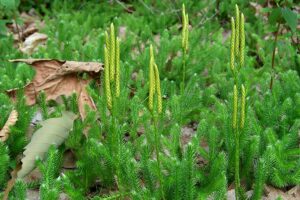
Horsetails-
These are the third group of plants in the Pterophyta. It is classified apart from ferns. It has a single genus, Equisetum. Survivors of large group of these plants are known as Arthrophyta. The plants are usually shown in damp environment and marshes.
Extend species of the horsetails number about 15 across the whole world. They are usually growing in wet atmosphere like bogs. They are arranged in whorls around the stem in joints.
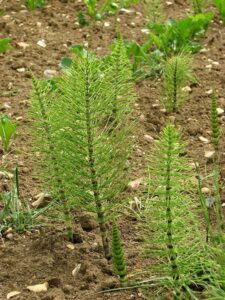
Ferns and whisk ferns-
This type is accepted as the most advanced seedless vascular plants. The features are seen mostly in seed plants. Ferns have large leaves and branching root; where whisk fern which is from Psilophytes lack both the roots and the leaves. It is lost may be because of the evolutionary reduction.
There are 20000 species in ferns and grow in shady mossy bogs of forest. They have a relation with underground stem plants examples like rhizomes considered to the botanists. Green ferns absorb light which is helpful for photosynthesis.
Whisk fern are not true but close to the true ferns. Sometime they grow as an epiphyte. Small primitive plants like this perform photosynthesis. They formed before Dinosaurs and still living now in the whole world today.
The examples of some seedless vascular plants are liverworts, Monilophyta, Ginkgophyta, Cooksonia, Equisetopsida, Psilitaceae etc.
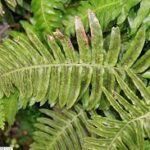
It is from the large group named tracheophytes which is specialized sum of cells like xylem and phloem that passes water and nutrients. During Carboniferous period swamp forests of club mosses and horsetails and about 30 meters tall species covered all the forests.
Back to the underground stem plants examples there are many types of underground stem plants like
Rhizomes-
These are usually with the without green proper nodes and internodes. They have auxiliary and apical buds which is brownish in colour. Fleshy in structure for the storing of food, contains terminal buds. E.g.- ginger.
Rhizomes grow vertically to the upside but not horizontally. Some examples are Banana and Alocasia indica.
It can be divided into 2 parts. One is in central and pear in shape known as “mother-rhizome” and its branches are known as “fingers” and there is only one main axis. The main part is used for cloning names as “seed rhizome”.
This part creates the main shoot and enlarges to the ultimate. Axillary buds are formed from the lower part of the axis and formed branches known as “primary fingers”. The number varies from two to five.
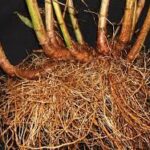
Bulbs-
Here the structure is fleshy and leaves are scale like. The pile of adventitious roots makes the base structure of bulbs. Bulbs can be scaley or clothed. This kind of bulbs have no cover. A sheath of dry and membranous scale leaves coated the clothed bulb. E.g.- onion, garlic etc.
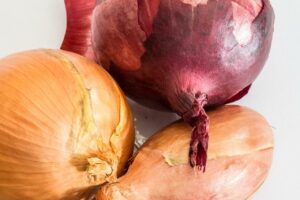
Corms-
The stem of these plants grows vertically. A flat base with a spherical shape is present here. Proper nodes and internodes are present here. At the base or all over the body the adventitious roots are present. On the sides the auxiliary buds are present. E.g.- Colocasia.

Tubers–
These plants mainly store food in their fleshy part. E.g.- Potato (Solanum tuberosum) is the common tuber we all know largely used as a vegetable. Lower part is penetrated in the earth and the upper part is above the ground. Adventitious branches grow beneath the soil surface. It is covered with ‘eye’ which is like depressions all over the body of potatoes.
Tubers are gaining appreciation for the high potential for culinary materials. Some of edible tubers or stems are tannia or yautia (Xanthosoma sp.), elephant foot yam (Amorphophallus sp.), and swamp taro (Cyrtosperma sp.) etc.
They are rich in nutrition like proteins and minerals like phosphorus and iron and many more. They are full of starch and their leaves and petioles are also consumed as green vegetables.
Some of more underground stem plants examples are, tugui, tam-si (Dioscorea sp.) apali, shallot (Allium cepa) [Aggregatum group], chive, gabi, bisol, Jerusalem artichoke (Helianthus tuberosus) etc.
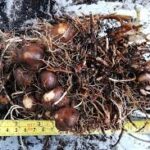
Also Read:
- Does yeast have mitochondria
- Does splicing occur in prokaryotes
- Bryophyte plant example
- Non protein enzyme example
- Coconut crab characteristics
- Crab examples
- Globular protein examples
- Dna replication steps
- Is coenzyme molecule
- Multiple fruit example

Hi….I am Aheli Dey, I have completed my Masters in Zoology. My specialization is in Parasitology and Immunology. I am very enthusiastic in learning new things. I prefer both hard and smart work.